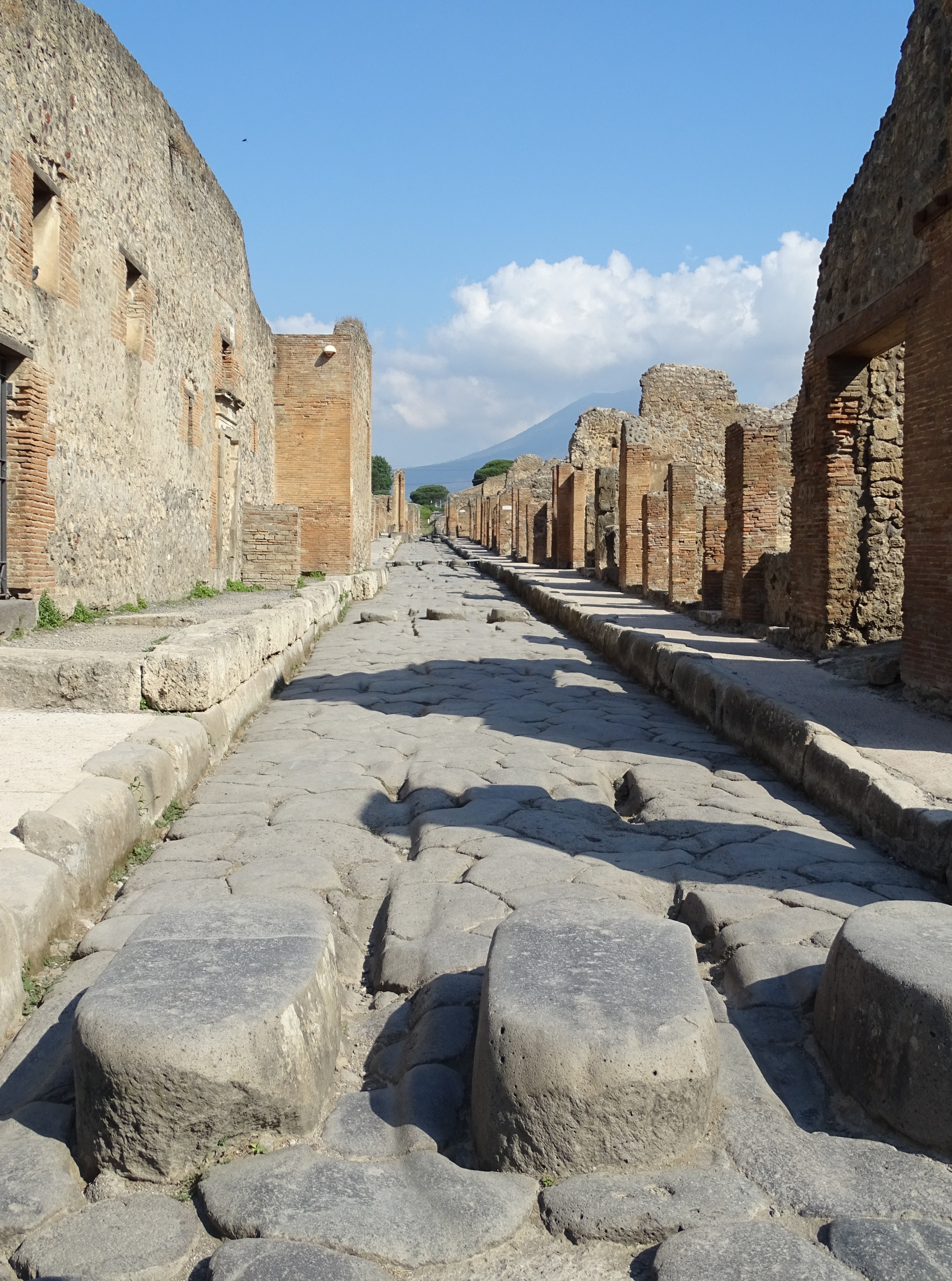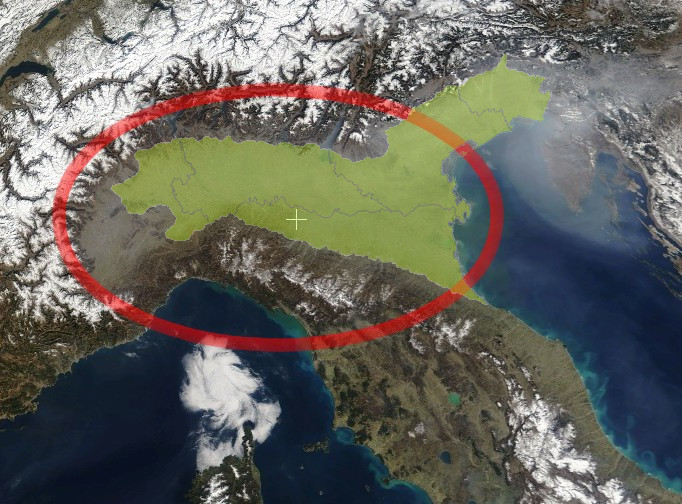|
Via Regina
Via Regina (Antica Strada Regina) is the old Roman road which ran from Cremona to Milan. It was based on an earlier trade route. the total length of the road was about Associated with it was the road along the western shore of Lake Como across the Milanese plain, that linked up with Valchiavenna. The name "Via Regina" (“strada regia”, royal road, hence main road) was given to it much later on and is first documented in the year 1187. Together with the waterway of Lake Como and the Po River, the Via Regina and associated paths were used by sailors, soldiers and merchants, as well as local traffic, with parts of it being suitable for vehicles, some just mule tracks, and a few pedestrian only paths. For centuries it constituted a true “Lake Como system”, an articulate network of routes pointing northwards, to the Alpine passes, and southwards, towards Milan, the hub for the Po Valley The Po Valley, Po Plain, Plain of the Po, or Padan Plain ( it, Pianura Padana , or ''Val ... [...More Info...] [...Related Items...] OR: [Wikipedia] [Google] [Baidu] |
Roman Road
Roman roads ( la, viae Romanae ; singular: ; meaning "Roman way") were physical infrastructure vital to the maintenance and development of the Roman state, and were built from about 300 BC through the expansion and consolidation of the Roman Republic and the Roman Empire. They provided efficient means for the overland movement of armies, officials, civilians, inland carriage of official communications, and trade goods. Roman roads were of several kinds, ranging from small local roads to broad, long-distance highways built to connect cities, major towns and military bases. These major roads were often stone-paved and metaled, cambered for drainage, and were flanked by footpaths, bridleways and drainage ditches. They were laid along accurately surveyed courses, and some were cut through hills, or conducted over rivers and ravines on bridgework. Sections could be supported over marshy ground on rafted or piled foundations.Corbishley, Mike: "The Roman World", page 50. Warwick Pr ... [...More Info...] [...Related Items...] OR: [Wikipedia] [Google] [Baidu] |
Cremona
Cremona (, also ; ; lmo, label= Cremunés, Cremùna; egl, Carmona) is a city and ''comune'' in northern Italy, situated in Lombardy, on the left bank of the Po river in the middle of the ''Pianura Padana'' (Po Valley). It is the capital of the province of Cremona and the seat of the local city and province governments. The city of Cremona is especially noted for its musical history and traditions, including some of the earliest and most renowned luthiers, such as Giuseppe Guarneri, Antonio Stradivari, Francesco Rugeri, Vincenzo Rugeri, and several members of the Amati family. History Ancient Celtic origin Cremona is first mentioned in history as a settlement of the Cenomani, a Gallic (Celtic) tribe that arrived in the Po valley around 400 BC. However, the name Cremona most likely dates back to earlier settlers and puzzled the ancients, who gave many fanciful interpretations. Roman military outpost In 218 BC the Romans established on that spot their first military outpo ... [...More Info...] [...Related Items...] OR: [Wikipedia] [Google] [Baidu] |
Milan
Milan ( , , Lombard language, Lombard: ; it, Milano ) is a city in northern Italy, capital of Lombardy, and the List of cities in Italy, second-most populous city proper in Italy after Rome. The city proper has a population of about 1.4 million, while its Metropolitan City of Milan, metropolitan city has 3.26 million inhabitants. Its continuously built-up List of urban areas in the European Union, urban area (whose outer suburbs extend well beyond the boundaries of the administrative Metropolitan cities of Italy, metropolitan city and even stretch into the nearby country of Switzerland) is the fourth largest in the EU with 5.27 million inhabitants. According to national sources, the population within the wider Milan metropolitan area (also known as Greater Milan), is estimated between 8.2 million and 12.5 million making it by far the List of metropolitan areas of Italy, largest metropolitan area in Italy and List of metropolitan areas in Europe, one of ... [...More Info...] [...Related Items...] OR: [Wikipedia] [Google] [Baidu] |
Lake Como
Lake Como ( it, Lago di Como , ; lmo, label=Western Lombard, Lagh de Còmm , ''Cómm'' or ''Cùmm'' ), also known as Lario (; after the la, Larius Lacus), is a lake of glacial origin in Lombardy, Italy. It has an area of , making it the third-largest lake in Italy, after Lake Garda and Lake Maggiore. At over deep, it is the fifth deepest lake in Europe, and the deepest outside Norway; the bottom of the lake is more than below sea level. Lake Como has been a popular retreat for aristocrats and wealthy people since Roman times, and a very popular tourist attraction with many artistic and cultural gems. It has many villas and palaces such as Villa Olmo, Villa Serbelloni, and Villa Carlotta. Many famous people have had and have homes on the shores of Lake Como. One of its particularities is its "Y" shape, which forms the " Larian Triangle", with the little town of Canzo as its capital. In 2014, ''The Huffington Post'' called it the most beautiful lake in the world for its mi ... [...More Info...] [...Related Items...] OR: [Wikipedia] [Google] [Baidu] |
Valchiavenna
The Valchiavenna is an alpine valley in the province of Sondrio, in Lombardy in northern Italy. It lies to the north of Lake Como, and is traversed by the rivers Mera and Liro. It can be divided into three parts which branch from the confluence of these rivers near Chiavenna, the principal town of the region. The lower part, the Bassa Valchiavenna, follows the course of the Mera downstream through the Piano di Chiavenna to Lago di Mezzola, and continues across the Pian di Spagna to the Trivio di Fuentes near Colico. Its territitory lies within the comuni of Mese, Prata Camportaccio, Gordona, Samolaco, Novate Mezzola and Verceia. The northern part consists of the Valle Spluga, the valley of the Liro river which leads up to the Splügen Pass on the border with Switzerland and includes the comuni of San Giacomo Filippo, Madesimo, and Campodolcino. The third subdivision of Valchiavenna is the Italian part (comuni of Villa di Chiavenna and Piuro) of the Val Bregaglia ... [...More Info...] [...Related Items...] OR: [Wikipedia] [Google] [Baidu] |
Po River
The Po ( , ; la, Padus or ; Ancient Ligurian: or ) is the longest river in Italy. It flows eastward across northern Italy starting from the Cottian Alps. The river's length is either or , if the Maira, a right bank tributary, is included. The headwaters of the Po are a spring seeping from a stony hillside at Pian del Re, a flat place at the head of the Val Po under the northwest face of Monviso. The Po then extends along the 45th parallel north before ending at a delta projecting into the Adriatic Sea near Venice. It is characterized by its large discharge (several rivers over 1,000 km have a discharge inferior or equal to the Po). It is, with the Rhône and Nile, one of the three Mediterranean rivers with the largest water discharge. As a result of its characteristics, the river is subject to heavy flooding. Consequently, over half its length is controlled with embankments. The river flows through many important Italian cities, including Turin, Piacenza, Cremona an ... [...More Info...] [...Related Items...] OR: [Wikipedia] [Google] [Baidu] |
Alps
The Alps () ; german: Alpen ; it, Alpi ; rm, Alps ; sl, Alpe . are the highest and most extensive mountain range system that lies entirely in Europe, stretching approximately across seven Alpine countries (from west to east): France, Switzerland, Italy, Liechtenstein, Austria, Germany, and Slovenia. The Alpine arch generally extends from Nice on the western Mediterranean to Trieste on the Adriatic and Vienna at the beginning of the Pannonian Basin. The mountains were formed over tens of millions of years as the African and Eurasian tectonic plates collided. Extreme shortening caused by the event resulted in marine sedimentary rocks rising by thrusting and folding into high mountain peaks such as Mont Blanc and the Matterhorn. Mont Blanc spans the French–Italian border, and at is the highest mountain in the Alps. The Alpine region area contains 128 peaks higher than . The altitude and size of the range affect the climate in Europe; in the mountains ... [...More Info...] [...Related Items...] OR: [Wikipedia] [Google] [Baidu] |
Po Valley
The Po Valley, Po Plain, Plain of the Po, or Padan Plain ( it, Pianura Padana , or ''Val Padana'') is a major geographical feature of Northern Italy. It extends approximately in an east-west direction, with an area of including its Venetic extension not actually related to the Po river basin; it runs from the Western Alps to the Adriatic Sea. The flatlands of Veneto and Friuli are often considered apart since they do not drain into the Po, but they effectively combine into an unbroken plain, making it the largest in Southern Europe. It has a population of 17 million, or a third of Italy's total population. The plain is the surface of an in-filled system of ancient canyons (the "Apennine Foredeep") extending from the Apennines in the south to the Alps in the north, including the northern Adriatic. In addition to the Po and its affluents, the contemporary surface may be considered to include the Savio, Lamone and Reno to the south, and the Adige, Brenta, Piave and Ta ... [...More Info...] [...Related Items...] OR: [Wikipedia] [Google] [Baidu] |






